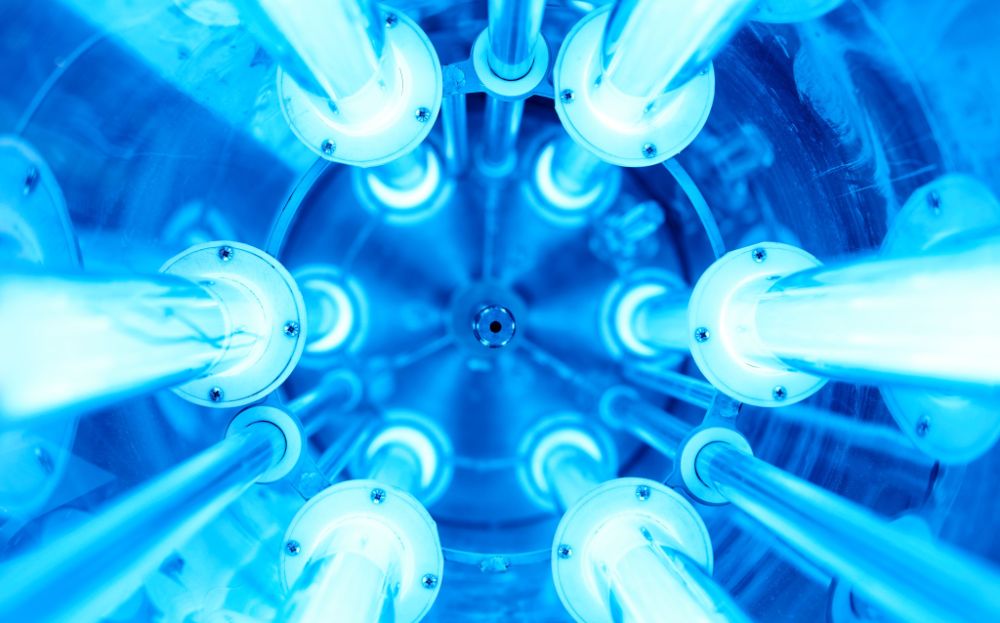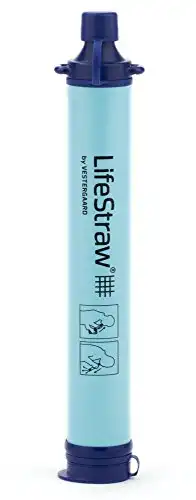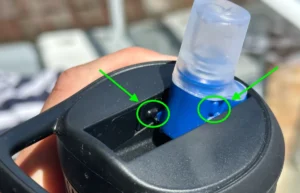UV water purification has helped hikers and homeowners access clean drinking water and it is a great solution to kill waterborne bacteria, protozoa and viruses.
However, UV treatment isn't a perfect solution for every type of water source. There are several disadvantages to UV water purification most people are unaware of.
UV purification is dependent on electricity and clear water. It doesn't remove chemicals or pollutants and has no visible signs it's working. These issues could put people at risk when drinking UV-purified water.
Understanding the limitations of UV water purification is the first step in staying healthy and safe. Here are some of the disadvantages of this water treatment everyone should know.
1. Requires Electricity
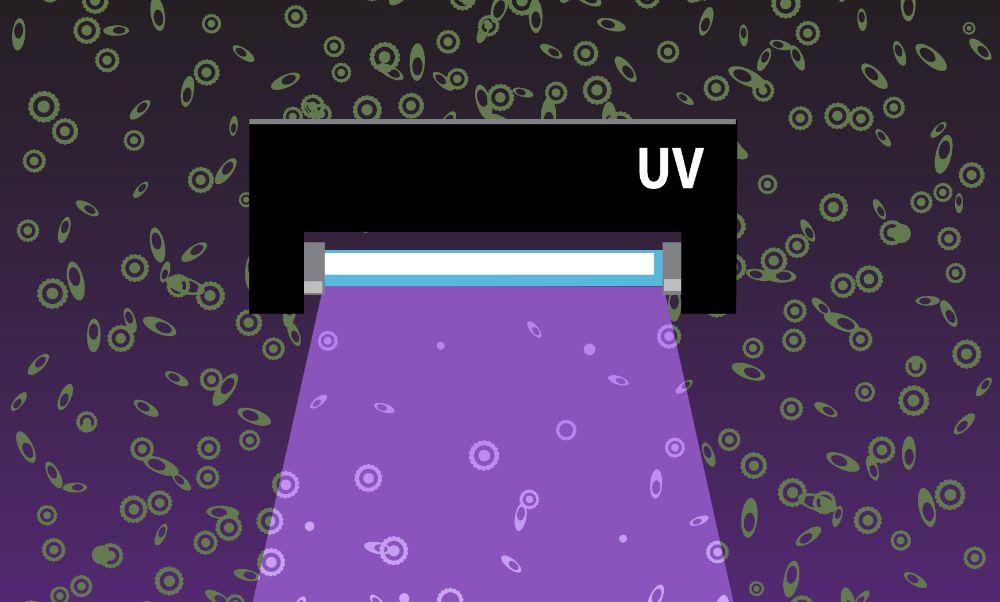
UV lights require electricity to operate via a battery or an electrical connection. This is because UV purification runs a device that emits UV-C rays, much like how a light bulb emits light. Without electricity no UV rays are produced so UV light's won't purify any water if they aren't switched on.
Homeowners who lose power after a storm may lose access to purified water. The water at home may no longer be safe when someone needs it the most.
Hikers are also dependent on electricity for UV water bottles. Failing to charge the bottle or losing the charge could put their health and safety at risk.
2. Requires Clear Water
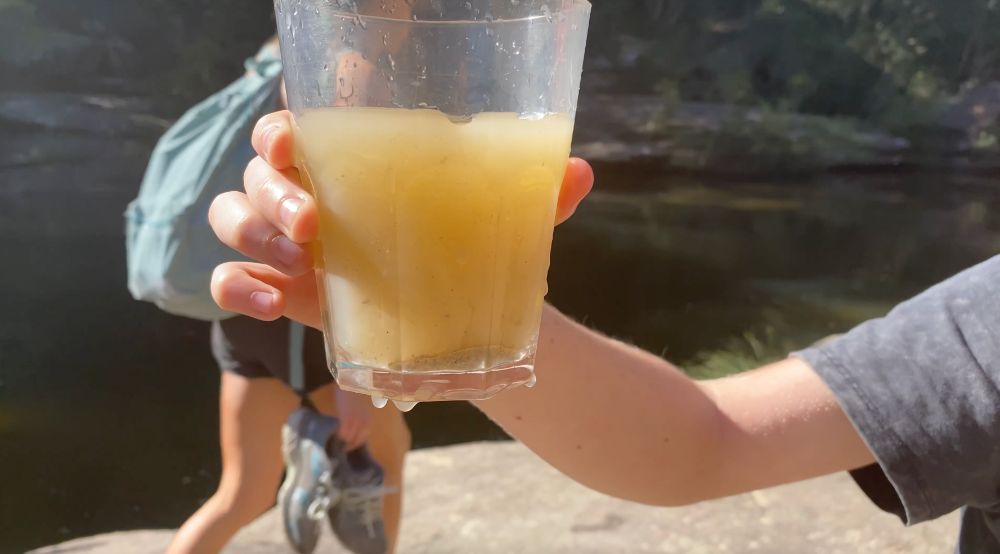
UV lights only work on clear water. This is because UV-C light is blocked by anything opaque and so sediments in the water can stop the UV rays from penetrating deeply and killing all the bacteria, protozoa and viruses in the water.
This isn't usually an issue with UV filters in your home as the water is already clear. However, hikers using UV bottles can only refill from clear rivers or streams and in some circumstances this can limited the type of water sources you can drink from.
Micro-filters like the Lifestraw (available at Amazon) still work in murky water filled with sediment, but UV filter lights like the HydroCap won't work in these circumstances.
UV treatment is only effective in direct contact. If there's a shadow or sediment in the water, the UV light won't eliminate bacteria, viruses, and protozoans beyond that point.
This limitation could pose problems for backwood adventurers with finite options for refilling their bottles.
4. Doesn't Filter Chemicals, Heavy Metals, Pollutants or Micro-Plastics

UV lights effectively removes 99.9996% of bacteria, protozoans, and viruses from the water. They do a great job at this however they do NOT remove chemicals, heavy metals, pollutants or micro-plastics (which are increasingly becoming a problem).
This is because UV water treatment works simply by shining UV light into the water killing the micro-organisms in the water. It doesn't actually filter anything out of the water.
If your water source is exposed to a chemical leak, lead, or flushed drugs, the UV light won't help. This issue could impact both homeowners with a UV system and hikers with UV water bottles.
Micro-plastics are also increasingly becoming a problem and something people are looking to avoid as it can have negative effects on your body.
UV light is unable to filter out micro-plastics.
5. Ineffective on Blue-Green Algae Blooms
Blue-green algae blooms have become more common in recent years. UV purification is ineffective against this type of algae.
The Department of Health advises against drinking water that may be contaminated with blue-green algae, even if you use filters, UV purifiers, and chlorine treatments.
There's a lot of dangerous misinformation online on sites like Quora and Reddit about UV treatments for blue-green algae. Always check with an official source.
6. Doesn't Filter Sediments and Minerals
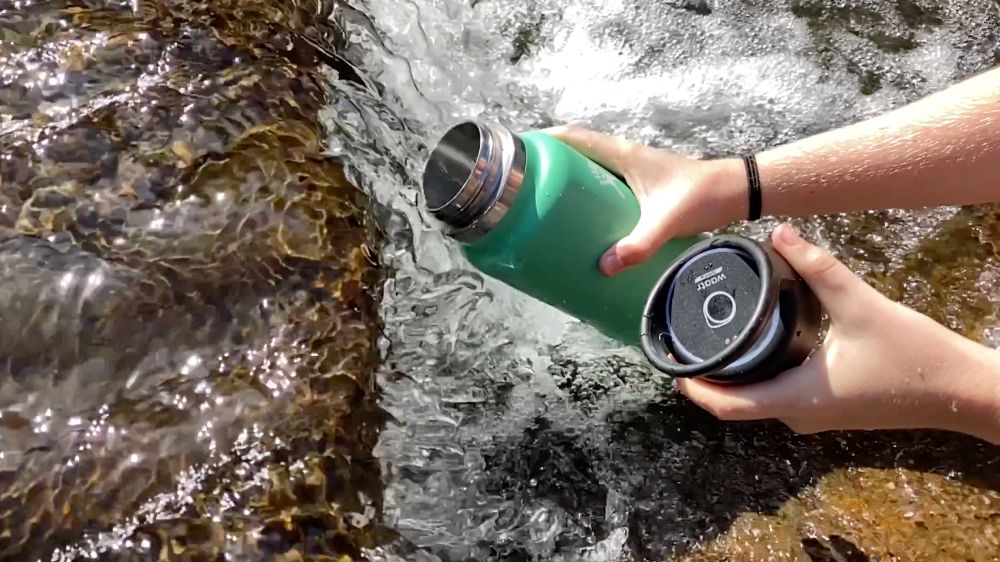
Clear water is a necessity, but not all sediment and mineral matter is visible to the naked eye.
UV treatments don't remove sediments or minerals from the purified water. Your water could still contain excess iron, salt, or manganese.
Excess salt could make a hiker sick, leading to dehydration and illness with no access to medical care. Increased manganese levels are linked with the development of neurological diseases like Parkinson's.
7. No Visible Signs of Efficacy
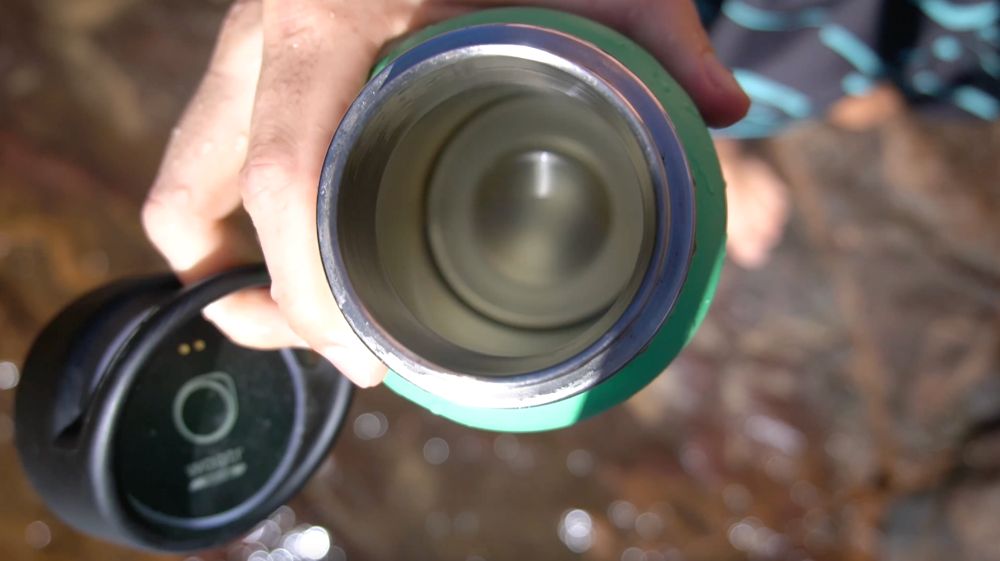
UV rays are invisible; the violet tones we sometimes see result from the light refracting off glass or plastic. The microorganisms UV lights eliminate are also invisible to humans.
One of the dangers of using UV light to treat water is that over exposure to UV-C light is also harmful to humans. So many UV treatment caps like the HydroCap and the Larq bottle only work when they are secured to the bottle (and you can't see or be exposed to the UV light).
These factors make it impossible to see whether a UV treatment is working properly.
Many home treatment systems are equipped with an alarm to notify the homeowner if the light burns out. However, as most treatment systems are in a basement or utility closet, the alarm might be muffled.
Similarly, UV water bottles often have a light notification system on the cap. If the battery is dead or the drinker is distracted, they may not notice.
8. Could Stop Working While Hiking
UV purification water bottles are marketed to adventurers and hikers who rely on their tools to keep them alive in the wilderness. Some users have reported glitches and tech issues with some brands of UV water bottles.
I personally had my HydroCap break and require a replacement. Fortunately, this happened when I was at home and not while I was out on a hike but it just goes to show that these products can fail.
An unexpected tech issue causing the UV purifier to stop working is a scary concept for people on multi-day adventures.
It's always a good idea to bring some a backup water purification solution like a Lifestraw or water purification tablets just in case your UV water filter does break.
Microfiltration membrane removes 99.999999% of waterborne bacteria (including E. coli and salmonella), and 99.999% of waterborne parasites (including giardia and cryptosporidium). Removes microplastics, is verified with laboratories using standard testing protocols set by the US EPA, NSF, ASTM for water purifiers and provides 4,000 L of clean and safe drinking water.
9. Doesn't Work Around Caps
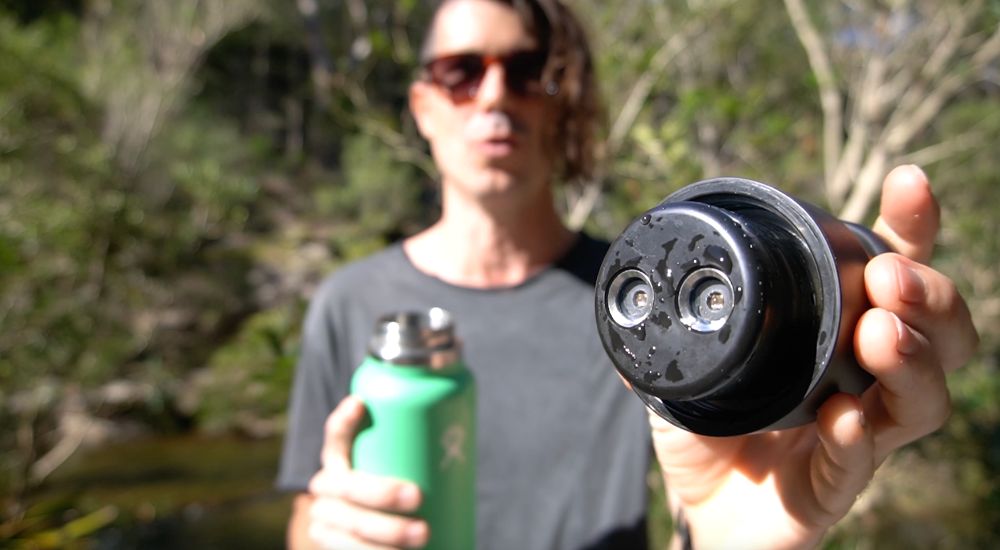
One of the common concerns with UV water bottles is the lack of light access around the lip and cap. This issue creates an opportunity for bacteria growth.
People who use lip chap or sip water while eating could experience bacteria growth around the bottle lip. Wiping down the lip between drinks is a must. You also need to make sure you don't overfill your bottle.
Homeowners with UV purification systems have also reported algae growth in tubes and connections around treatment lamps in some models.
10. No Residual Effect
UV purification systems are only effective at the point of contact. Once the water travels through pipes or gets poured into a cup, it can be re-exposed to bacteria.
This issue isn't a concern for UV water bottles but could pose problems for homeowners.
11. False Sense of Security
Perhaps the biggest disadvantage of UV water purification is the false sense of security it provides.
While UV-treated water is exponentially better than untreated water, it's not perfect. The term “purified” is subjective. Drinkers need to understand the other risks and take precautions.
Additional Safety Tips for UV-Purified Water
With knowledge and preparation, you can make your UV-treated water safer.
Use a Filter
Use a filter to remove sediment and minerals from your water. Add a carbon filter to your refrigerator water jug or bring a filtration system with you on your outdoor adventures.
Wash Your Bottle
Don't be fooled by the claims of “self-cleaning” bottles. Wash your bottle regularly with warm water and soap. If you notice odors or build-up, use boiling water and vinegar.
Use Testing Strips
Take water testing strips with you on your outdoor adventures. You can also use these to test your drinking water at home. It's also worth having a certified lab test your tap water annually if you're concerned about purity issues.
Charge Your Bottle
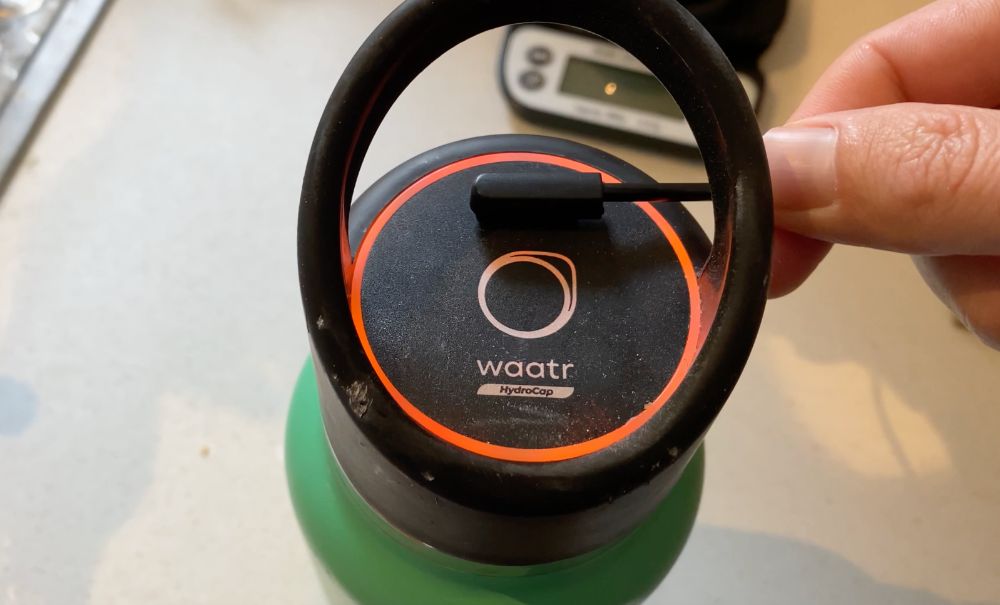
Always make sure to charge your UV water bottle before going on an adventure. Consider setting an alarm as a reminder.
Have a Backup
Always have a backup plan. If you're hiking, keep a spare, fully-charged UV water bottle with you or add a filtration system to your pack.
At home, put together an emergency kit with enough clean, bottled water to last 72 hours.
Don't Get Complacent with UV Treatment
Complacency is the biggest risk of drinking UV-purified water. Know the risks and shortfalls of UV purification so you can put safeguards in place. Preparation is essential for securing access to safe drinking water, both at home and on the go.

